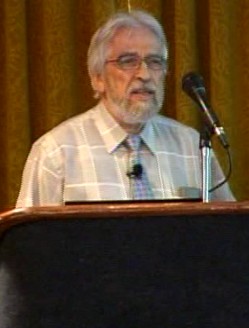Dr. Stoyan Sarg (Books)
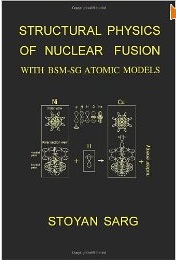 View count:
View count: 1
by Stoyan Sarg
Pages: 212
Publisher: CreateSpace Independent Publishing Platform
Year: 2013
ISBN: 1482620030
ISBN: 978-1482620030
Remarkable advances in cold fusion experiments have raised the hope for a safer and cheaper nuclear energy. The results, however, cannot be explained from the point of view of current physical understanding of nuclear fusion. This is an obstacle to endorsement and investment in this field. The research needs a supporting theory. The present book suggests a new approach for analysis of the results and offers practical recommendations based on the physical models of atomic nuclei derived in the BSM-Supergravitation Unified theory (BSM-SG). The book provides: (1) a method for analysis of the LENR experiments using the BSM-SG atomic models; (b) a selection of isotopes suitable for a more efficient energy yield with a minimum of radioactive byproducts; (c) practical considerations for selection of the technical method and the reaction environment. The BSM-SG theory is based on a concept of space that follows the view of Michael Faraday and the recommendations of James Maxwell about the properties of the envisioned space medium, known as Aether. The concept of an Aether (Ether) was abandoned in favor of the quantum mechanical formalism adopted in the first quarter of 20th century. However, Albert Einstein was against this approach and openly expressed his concerns after he developed General Relativity. In his monograph ?Sidelights on relativity? (1921) he wrote: ?To deny the ether is ultimately to assume that empty space has no physical qualities whatever? (p.23) and ?According to general theory of relativity space without ether is unthinkable? (p. 23). From our point of view, the major problem for recognition of the feasibility of LENR is the adopted quantum mechanical formalism. In quantum mechanics and particles physics, all elementary and subelementary particles are assumed spherical without any geometrical structure. Then the data interpretation of scattering experiments leads to a very small atomic nucleus on the order of a femtometer. This leads to a conclusion of a very strong Coulomb barrier that might be overcome only at temperatures of millions of degrees. The results from LENR experiments are in a sharp contrast to this consideration. According to BSM-SG theory, the physical models of protons and neutrons have superdense material structures with the shape of a folded and a twisted torus, respectively. They are much larger but thinner, so the Coulomb barrier also has a non-spherical shape and it is not so strong. The protons and neutrons are held in the nucleus by a Supergravitational (SG) field, which is behind the strong nuclear forces. The protons and neutrons in the atomic nuclei form three-dimensional fractal structures. The spatial geometry of the nuclear structures defines the row-column pattern of the periodic table with identifiable features of the valences, isotope stability, nuclear spin and chemical bond directions. The analysis leads to a hypothesis that the superdense nucleus causes a micro-curvature ? a general relativistic effect around the nucleus. It has a feature of energy storage that corresponds to the mass deficit or nuclear binding energy expressed by Einstein?s equation, E = mc^2. The fusion or fission reaction causes a small change of the micro-curvature, so the difference in the binding energy is released as gamma and particle radiation that is finally converted to heat. The analysis of some LENR experiments shows that the excited state of hydrogen and deuterium, known as the Rydberg state, facilitates some fusion reactions. According to BSM-SG, the Rydberg state is an ion-electron pair, with a finite size at the boundary of the SG field, while possessing a strong magnetic field due to the dominated magnetic moment of the electron. Additionally, the anomalous magnetic moment of the electron provides a constant driving momentum. When combined with a proper nuclear spin state of a selected heavier element, this momentum assists the magnetic field interactions, and this leads to nuclear fusion.
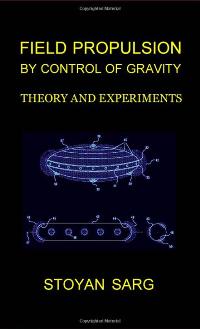 View count:
View count: 1
by Stoyan Sarg
Pages: 174
Publisher: Create Space
Year: 2009
ISBN: 144869308X
ISBN: 978-1448693085
Field Propulsion by control of gravity is a space drive mechanism of new kind. It is based on gravito-inertial effect predicted by BSM Supergravitation unified theory and called a Stimulated Anomalous Reaction to Gravity. It is activated by a Heterodyne Resonance Method invoking Quantum mechanical interactions between oscillating ion-electron pairs and the space-time continuum.
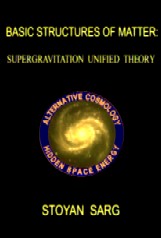 View count:
View count: 1
The proposed unified theory shows the relation between the forces in Nature by adopting the following ideas: (1) An empty Euclidian space without any physical properties or restrictions; (2) Two super-dense fundamental particles, able to vibrate and combine in geometrical formations; (3) A fundamental law called Super Gravitation (SG) - an inverse cubic law valid in empty space.
Basic idea: A sufficient abundance of these super-dense particles, driven by the close range SG forces into self-organised hierarchical levels of geometrical formations, leads deterministically to the existence of space with quantum properties (the physical vacuum) and galaxies as observable matter. All known laws of Physics are embedded in the underlying material structure of the physical vacuum and in the structure of the elementary particles (graphically presented in Appendix: Atlas of Atomic Nuclear Structures). Major predictions: existence of hidden space energy of non EM type and a propulsion mechanism of new kind by proper modulation the parameters of the physical vacuum.
Book review -
Physics in Canada, V62, pp. 206-207 (2006).
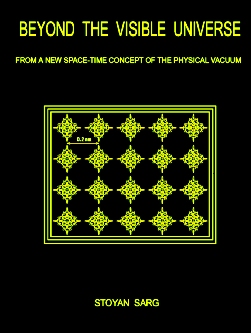 View count:
View count: 1
The picture on the front cover of the book shows a theoretically obtained image of a metal lattice from gold atoms. While the overall pattern matches the images from most powerful tunneling microscopes, the resolution of shown image is much superior. The secret is in the derived structures of the elementary particles and atomic nuclei. It became possible due to a new space concept, closer to the Ether vision but never investigated before. What was considered impossible in Physics for 100 years became a reality: relation between Classical Mechanics, Quantum Mechanics and Relativity. One big surprise is the understandable relation between the gravitational, electrical and magnetic fields. Another surprise is the existence of hidden space energy of non electromagnetic type. Third surprise is that the gravitational mass could be manageable. Forth surprise is that the Big Bang is an illusion: The Universe is stationary, while every galaxy has own evolutional cycle comprised of active life (about 12 billion years) collapse, hidden phases of matter recycling and rebirth. The most energetic cosmological events Gamma Ray Bursts are signatures of a galaxy collapse or rebirth. The currently recognized Crisis in Cosmology is a result of incorrect space concept.
Book review - Physics in Canada, V62, pp. 206-207 (2006).
